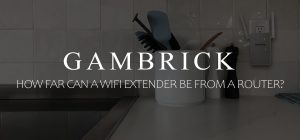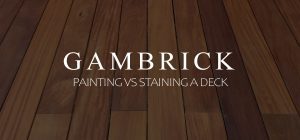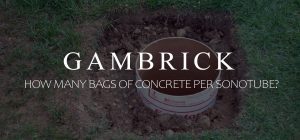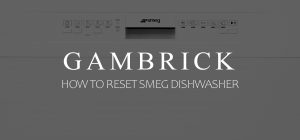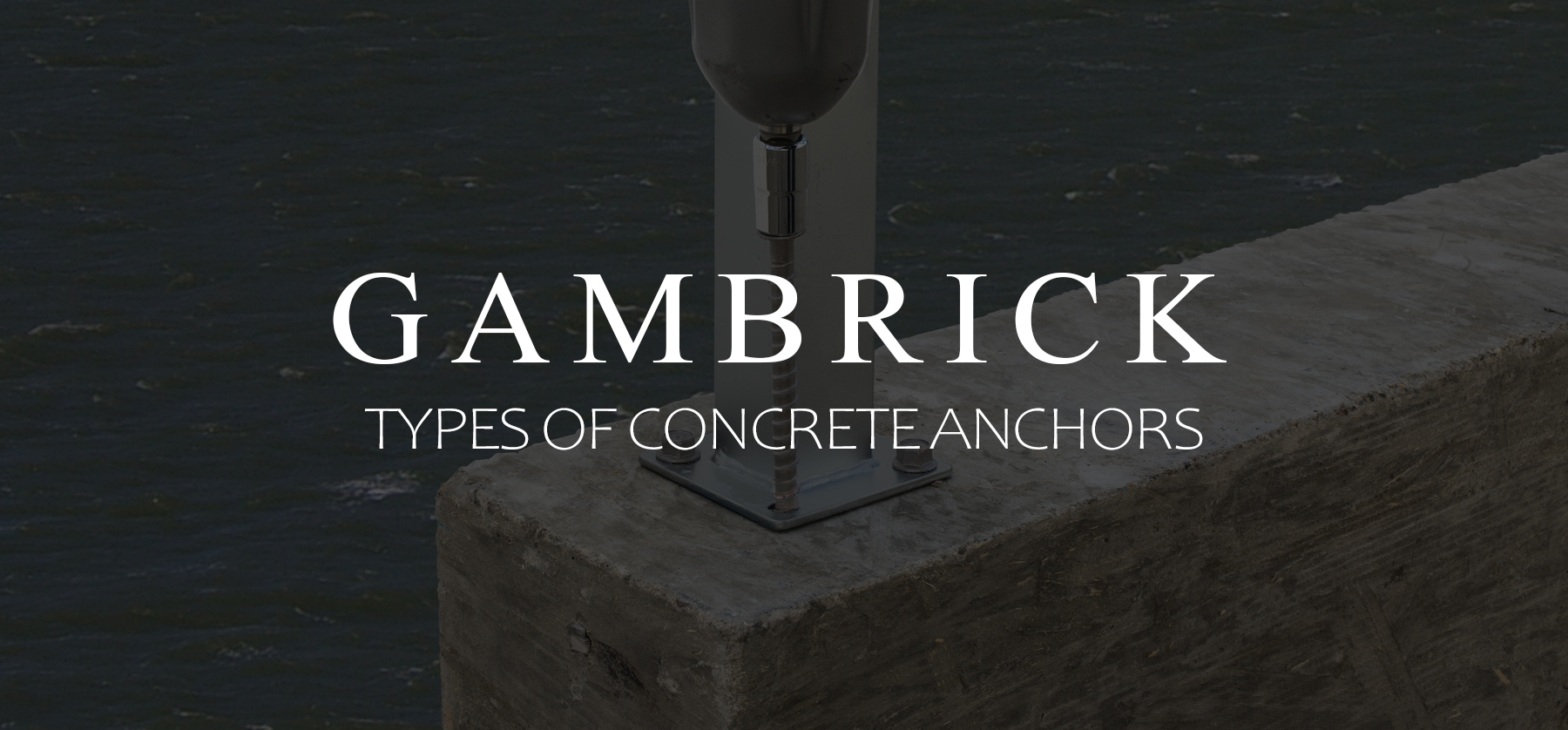
Types Of Concrete Anchors
I’ve been a mason and home builder for over 25 years and can tell you firsthand, concrete anchors are very important in the building industry. There are dozens of reasons why may need to secure something to concrete. In those situations a concrete anchor will be used. There are many types of concrete anchors to choose from and you’ll need to use the correct one for the job. Concrete anchors come in light, medium and heavy duty, based on how much weight they can support. Screws, hammer-set anchors, lag shields, screw anchors, plastic wall plugs, concrete nails, and bolts are a few common types.
Concrete anchors come in different shapes, sizes and designs because there are lots of different reasons to secure something to concrete. Hanging a picture will obviously need a much smaller and weaker anchor then securing a home to it’s foundation. So anchors are designed for different purposes with varying degrees of strength.
Concrete anchors allow you to join concrete to wood, stone, metal, plastic, and much more, including more concrete.
Anchors can be installed when the concrete is still wet or they can be drilled into concrete later. There are different types of anchor styles for each situation.
When installing an anchor in hardened concrete, it can potential cause a crack, to make repairs use a high quality concrete crack filler. Repair the crack immediately after the hole is drilled to prevent it from getting worse.
In this article, we’ll go over the many type of concrete anchors, common uses, the best kinds for each application, and help you decide what kind may be best for your project.
Concrete Anchor Load Types
Concrete anchors are designed to support different types of load and varying degrees of pressure. Understanding the type of load that will be placed on the anchor, and how much, is important when choosing the correct one to use.
Pro Tip: Keep in mind that if your choosing an anchor for something like building a home, bolting down a shed or anywhere safety is a concern you should let an architect, manufacturer or engineer select the best concrete concrete anchor for your application. I would only choose your own when safety is not a concern.
Load type has to do with the direction the pressure is placed on the anchor. For example, if the weight is pulling on the anchor that’s a different type of load than if it’s pushing against it’s side.
When choosing concrete anchors, consider both the type of load as well as the amount of weight the anchor can support. This is sometimes made easy because the label will often tell you the anchor’s weight limits. However, when you buy them individually it’s much harder to determine. This is where a good set of blueprints will come in handy.
- Shear strength describes the amount of force the weight of an object exerts on the anchors side. This is common when hanging a picture or using a ledger bolt.
- Tensile strength is the amount of force required to pull the anchor out of the concrete. This is important when bolting a shed to a concrete foundation.
- Static strength is important for objects that never move and always exert the same pressure.
- Dynamic strength is used to secure objects that move or vibrate.
- Impact strength is needed when weight is increased suddenly.
Concrete Anchor Overview
Here is a brief overview of the most common concrete anchor types and how to use them. We’ll go into more detail later in the article.Keep in mind before you secure the anchors a pilot hole is drilled first. Typically this is done with a hammer drill and masonry bit.
Common concrete anchor types include:
- Hammer-set anchors: These are set in place with a hammer.
- Concrete screws: These are screws specially designed to grip concrete. A pilot home is drilled first which is slightly smaller than the screw. Then the screw is installed which finishes drilling the hole. This ensures a tight grip.
- Lag shields:
- Lead screw anchor:
- Plastic wall plug:
- Anchor bolts:
Masonry and concrete anchor types are considered light, medium or heavy duty based on how much weight they can support.
- Light duty anchors are best for wall hangings that weigh up to 50 pounds.
- Medium duty anchors are best for wall hangings that weigh up to 200 pounds.
- Heavy duty anchors are best for structural needs and wall hangings over 200 pounds.
Always consult with an architect, engineer or manufacturer wherever concrete anchors are used structurally or where safety is a concern.
Working With Concrete Anchors
Installing a concrete anchor isn’t that hard. But drilling into the concrete can be difficult if you don’t have the right tools. Concrete is hard and dense, especially if it’s a high psi concrete with lots of stone. Stone size and density can vary quite from batch to batch and there’s no way to know exactly where the stones are. If you’ve ever drilled through concrete and hit a hard stone you’ll know how difficult it can be.
Concrete anchors require a pilot hole to be drilled first. The best way to drill into concrete is with a good hammer drill and a new bit. With those two things it’s usually pretty easy to do. With the right tools and bit even stones aren’t typically a problem.
Try using water, compressed air or a blower to cool the bit and reduce dust.
Always wear a mask when drilling into concrete because the dust can be harmful.
- Use a hammer drill when installing concrete anchors.
- You will need to drill a pilot hole when using concrete anchors so get a good bit.
- Use a can of compressed air, a blower or water to clean dust.
- Buy the right sized bit and get a spare or two.
- Use chemical anchors or powder actuated anchors when working with an extremely heavy object that requires an industrial strength hold. These are generally for professionals only.
The best concrete anchor for your project will depend on the material you’re drilling into, the weight of the object and the type of force.
Light duty and medium duty anchors can support most DIY projects like hanging a picture. For heavy objects use a heavy duty anchor.
What Do Concrete Anchors Do?
Concrete anchors join concrete to other objects such as wood, metal, plastic, machinery, and even more concrete.
Concrete is a great material for foundations. It’s very strong, dense, easy to work with, affordable and weather resistant. Almost every house or large structure built these days uses concrete somewhere in it’s foundation such as the footings. But how do you secure the home or other structure to the concrete? A concrete anchor.
Next time you drive by a lamp post notice how the base is bolted to a concrete footing. The same is true of bridges, buildings, large signs and almost every other structure. If you want to build something stable and secure then using a concrete footing with anchors can be a great solution.
Concrete anchors have lots of everyday household applications too.
- Light duty concrete anchors are great for hanging pictures, towel bars, doors, and other objects under 50 lbs (22.7 kg) to concrete walls.
- Medium duty concrete anchors can hold weights of up to 200 lbs (90.7 kg). These are useful for securing heavier object like hanging a TV.
- Heavy duty concrete anchors are designed mainly for construction. They can hold weights of over 200 lbs (90.7 kg). You can use heavy duty anchors to join concrete with just about any other material. They’re common when building a house. Anchors tie a house to it’s concrete foundation. If you simply built a house on top of concrete without anchoring it down, a bad storm or flood could tip it right over or lift it off the foundation.
In summary, concrete anchors secure another object to concrete. Most commonly they’re are used for DIY projects around the house like hanging a picture or TV to a cement wall.
What Is The Best Type Of Concrete Anchor?
Concrete anchors come in a variety of shapes, sizes and designs. Each meant for a different application.
Anchors are designed to resist different types of force and varying amounts. Make sure you buy the correct anchor for your application. Generally it’s OK to go bigger than you need, but I wouldn’t go smaller or you’ll risk a failure.
Choose the right size and type anchor for your project so that whatever you’re securing is tight and strong. I’ve seen undersized anchors rip right out of a concrete wall which can not only damage the wall but also the object your hanging.
Also make sure you install the anchors correctly. I’ve also seen anchors that were sized correctly fail because of improper installation. Generally this is caused by drilling the pilot hole too large for the anchor which doesn’t allow for a tight fit.
Concrete Anchor Types
Concrete anchors come in two basic forms, cast in place and post installed. here’s a description of each.
Cast In Place Anchors
Cast in place anchors are installed into wet concrete such as a footing or foundation wall. They permanently fix the anchor into the concrete’s surface which makes them extremely strong.
This type of anchor is durable and can typically bear very heavy loads. Cast in place is generally for constructing and securing large structures or objects. The tie downs that secure a house to it’s foundation are generally cast in place. When an anchor is set right into wet concrete, the concrete adheres and dries tightly without the need for a pilot hole. This gives the anchor a much tighter fit than it could achieve otherwise.
Since they’re so strong, they’re excellent for structural applications. Securing heavy objects to concrete or joining concrete slabs to structural materials such as beams, walls, and foundations are all done with cast in place anchors.
Since cast in place concrete anchors have to be installed when the concrete is wet, they’re size, type, spacing and design is generally noted on the blueprints. This is usually determined by an architect or engineer.
Post Installed Anchors
Post installed anchors aren’t typically as secure as cast in place anchors because they’re installed after the concrete has dried and hardened. However, even though they’re generally considered less secure, a heavy duty post installed concrete anchor can still bear loads in excess of 200 lbs (90.7 kg).
If you need even more strength, a two part acrylic anchoring adhesive can be squirted into the pilot hole before an anchor is installed. This increases the strength by bonding to the anchor which is similar to installing it into wet concrete. The adhesive comes in a tube and is very similar to working with caulk or glue.
Post installed concrete anchors are generally used for applications that require less strength like most DIY projects. For example, if you need to hand a TV to a cement wall then post installed anchors would be used.
Almost any object can be secured to a concrete slab with a post installed anchor.
They come in a wide range of sizes, strengths and designs. Choose the correct one for the project your working on.
Because post installed concrete anchors are used after the concrete has dried and hardened, you’ll need to drill a pilot hole. A good hammer drill and new buts will come in handy.
Pro Tip: Don’t drill a pilot hole that’s too big or too small. If it’s too big the anchor won’t have a tight fit and could easily pull out. Too small and you’ll have a tough time squeezing the anchor in without damaging the concrete. Concrete doesn’t give, it only cracks.
Concrete Anchor Size
Anchors come in varying thicknesses and lengths.
Longer and thicker concrete anchors are better for bearing heavier weights. Steel beams, structural materials and heavy machinery use much thicker and longer anchors than if your hanging a picture.
Smaller anchors are for attaching smaller or lighter objects. Things like a picture, TV, furniture, mantel, headboard, light, etc.
The size of the anchor greatly effects the amount of force it can support and endure without breaking.
Concrete Anchor Metal
Another thing to consider when selecting the best concrete anchor for your project is the metal it’s made out of. This depends a lot on where you’ll be installing the anchor.
Most concrete anchors are either made of stainless steel or zinc. Stainless steel is generally better for outdoor or wet environments because it doesn’t rust. Zinc anchors are better for indoor or dry environments because rusting isn’t a problem.
The advantage to using zinc vs stainless steel concrete anchors is price. Zinc is less than half the price.
Cast In Place Concrete Anchors
Cast in place concrete anchor types are some of the strongest, most secure designs on the market. They’re inserted directly into the wet concrete before it cures. This permanently embeds the anchor into the concrete slab which provides a much tighter bond.
These anchors are generally used for structural applications such as attaching walls to a concrete foundation or securing large beams or heavy objects.
Cast in place anchors can bear a lot of pressure without cracking the concrete. When using these anchors correctly, there’s little risk of the concrete crumbling or cracking around the anchor. There’s also no risk of damaging the concrete while drilling or installing the anchor since a pilot hole isn’t needed. This makes them one of the best options for securing heavy loads to a concrete surface.
Cast in place type anchors are generally not used for DIY projects since they involve forming and pouring a concrete slab of some kind.
J-Bolt
The most common type of concrete anchor we use when building new homes here in New Jersey are called J-bolts. The reason they’re called J-bolts is because they’re shaped like the letter J.
One end of the bolt has the J curve while the other is threaded. The J end is placed into wet concrete while the threaded end sticks up. Once the concrete dries, wood or some other material can be placed on top of the concrete with the bolt sticking through it. A washer and nut is then used to secure the material to the concrete. This is typically how we tie down a homes framing to the foundation.
Lifting Inserts
Lifting inserts make it easier to move and transport heavy concrete slabs.
Inserts generally consist of a metal pin attached to a round eyelet that is permanently cast into the concrete. The eyelets are then attached to a wire or chain and lifted by a heavy duty machine such as a crane or excavator. You can also use these eyelets with small slabs of concrete to help lift them by hand or with smaller machines such as a Bobcat.
Lifting inserts are used to transport and set in place heavy concrete slabs. They’re not used as a structural anchor but are still considered a form of concrete anchor. Once the concrete is moved and set in place, the insert is typically left in place. However insert can be removed if need be.
Anchor Channels
Anchor channels are rolled steel channels installed directly into wet concrete that function like a track for your bolts. They allow you to remove and add new bolts to the channel as needed. The way it works is the channel attaches to the concrete and the bolt to the channel. The bolts don’t actually come in contact with the concrete. Because of this smart design, bolts can be slid along the channel and adjusted as needed.
They sit flush with the concrete slab’s surface which makes them ideal for walking surfaces.
Anchor channels are versatile since you can adjust the bolt location or remove them as you wish.
Headed Studs
Headed studs are used primarily for welding metal onto concrete.
They’re called headed studs because they have thick steel heads attached to a round stud. They look like a bolt without the threading. Typically they’re used to secure metal sheets or beams to the concrete surface. One part of the stud is placed into the concrete while the other part sticks out. The part protruding from the concrete is then welded to metal.
This type of concrete anchor isn’t something a homeowner would need. Generally they’re used in commercial building by welders.
Threaded Sleeves
Threaded sleeves can be precast into wet concrete. They allow you to use bolts to attach objects to the concrete surface without having to drill a pilot hole since. Essentially the sleeve acts as the pilot hole.
Threaded sleeves are excellent for securing any object to a concrete slab. They’re very strong and made the exact size for the bolt your using so you don’t have to worry about drilling the correct size pilot hole. You also don’t have to worry about damaging the concrete when you drill since the sleeves are set while the concrete’s wet. And there’s no dust to worry about.
The top of the threaded sleeve sits flush with the concrete surface. This means the material can sit flush with the top of the concrete without the sleeve getting in the way. They’re also not a tripping hazard.
Post-Installed Concrete Anchors
Post installed concrete anchor types are installed into cured concrete using a drill. If you need to attach something to hardened concrete then a post installed anchor is the only option. They’re a bit less durable and generally not as strong as cast in place concrete anchors, but they’re still very strong.
Post installed concrete anchor types are installed using a drilled pilot hole.This means you’ll also need a good drill and a masonry bit. I recommend using a hammer drill. They’re much better at drilling into concrete than a traditional drill that only spins.
Post installed anchors are the most common type used by homeowners for DIY projects because they’re mainly used after construction is complete.
Some post installed anchors can be used for structural applications, however these typically also include the use of a two part epoxy filler which bonds the anchor to the concrete. These are sold in tubes similar to caulk and squirted into the hole prior to installing the anchor. Essentially they create the same tight bond as if you installed the anchor into wet concrete.
The majority of post installed concrete anchors are used to hang simple items like a TV or picture to a concrete wall and can be found at any Home Depot.
Lag Shield Anchor
Lag shield anchors are very similar to threaded sleeves. The shield is simply a threaded sleeve that you install into a pilot hole instead of wet concrete. A pilot hole is drilled first and then the shield is hammered into place.
Once the shield is hammered into place, a lag bolt is screwed into it which secures the material to the concrete.
Lag shield anchors are one of the most popular and versatile post installed concrete anchor types. They hold material tight to the concrete as long as the shield holds in place. However, since the bolt doesn’t touch concrete, all the pressure is on the shield. But they’re very secure. Lag shields are designed to expand when you thread the screw into the shield which proved a very tight grip. When you insert a lag screw into the shield, the shield’s bottom splits and spreads open, increasing its diameter and securing it into the concrete with metal ribbing. Because of its ability to expand and grip the surrounding concrete, lag shields can hold heavy weight and withstand high amounts of pressure.
Since the shield is hammered down into the concrete it sits flush and smooth with the face of the concrete.
Tips:
- Because of their soft metal wedge, lag shield anchor bolts work well where the hold may be subject to vibration.
- When drilling the hole for a lag shield anchor, keep in mind that proper hole size is very important. The shield will spin in a hole that’s too large, and if the hole is too small, the shield will be crushed by the hammer.
Wedge Anchor
Wedge anchors are easy to install and very secure.
These anchors look like a standard bolt with a fluted end and a small metal shield on them. When installing a wedge anchor into concrete, use a hammer or mallet to force the anchor’s fluted end into the hole. After the anchor is hammered in place, use a nut to secure something down to the concrete.
When you tighten the nut onto the wedge anchor, the anchor’s fluted end rises, forcing the small metal shield on the bolt to expand which grips the concrete tightly.
Once the anchor is installed and tightened down it can’t be removed without breaking the concrete. However, since this anchor is so hard to remove without damaging the concrete, it’s very durable and strong.
Tips:
- Holes drilled into the concrete for a wedge anchor should be equal to the anchor’s diameter. Too big and too small are both bad.
- Wedge anchors are designed for solid concrete and should not be used in brick, block, mortar, or stone.
Drop In Anchor
Drop in anchors consist of two parts, a bolt and a sleeve.
The sleeve’s top half is smooth, while the bottom half is rough with small slits. This rough portion allows the sleeve to expand after you drop it into the concrete similar to how wedge, shield and threaded anchors work. The expansive pressure helps keep the anchor secure.
Once the sleeve is in place a pin is driven into the concrete. The pin provides pressure and helps keep the sleeve fixed within the concrete.
To release the pin from the sleeve, you’ll need to use a setting tool. The setting tool is a metal rod that gets inserted into the sleeve after it’s in place. Once you insert the setting tool, strike it with a mallet to release the pin.
Drop in anchors aren’t my favorite. Because they’re removable they don’t provide the same level of strength and durability as other anchor types.
Sleeve Anchor
A sleeve anchor is combination wedge and lag shield anchor.
Sleeve anchors have a long metal sleeve and a bolt with a fluted or wedged end. The sleeve has some slits and cross cuts in it which allow the sleeve to expand as the bolt is tightened.
Installing a sleeve anchor is simple. Leave the sleeve, nut, and washer on the bolt and hammer the anchor into the concrete with the wedge on the bottom. Make sure to leave enough of the anchor exposed to secure the object that you’re going to affix to your concrete. If you hammer the sleeve too deep you won’t have enough room to bolt down the object. When you tighten the nut, the sleeve expands which secures the object.
Sleeve anchors are a very popular choice because they’re easy to install and hold really well. I like any concrete anchor type that expands against the concrete because that pressure creates a much stronger hold.
Hammer Drive Pin Anchor
Hammer drive pin anchors are permanent. You cannot remove them after installation.
They’re shorter than other concrete anchor types and they don’t have threads so you can’t remove the object you’re securing after you install the anchor. So make sure everything is correct before you drive the anchor.
Hammer drive pin anchors have a sleeve attached to a longer pin. The sleeve has a slotted end that expands when you drive the pin in place.
To install one of these anchors, drill your pilot hole and then use a hammer or mallet to drive the pin in place. Once you’ve hammered in the pin, set the object your securing in place.
Always use these anchors directly on the materials that you’re trying to secure.
How To Install a Post Installed Concrete Anchor
Installing a post install type concrete anchor is quick and easy provided you have the right drill and bit. However, if you have a weak drill and/or a bad bit, it can be very hard to drill the pilot hole. Generally an anchor can be installed in 5-10 minutes. The really hard part is laying them out. Make sure the position of each anchor is just right before you drill because small adjustment can’t be made. Concrete isn’t a forgiving material to work with.
Use some water, compressed air or a blower to deal with concrete dust as you drill and wear a mask. Concrete dust can be bad for your health.
Before installation, make sure you have the right concrete anchor type for the job. And double check your bit. If the pilot is too small your anchor won’t fit. And if it’s too large the anchor will be weak and could easily pull out.
Make sure you know how deep the pilot hole needs to be. Too deep and too shallow are both bad. Especially if your anchor type uses a sleeve.
The Tools You’ll Need
Before installing your concrete anchors, you will need a few tools:
- A mallet or hammer may be needed to bang in the anchor.
- The concrete anchor.
- A hammer drill is recommended but you can use any drill that strong enough.
- A correctly sized masonry bit. Make sure it’s not only the right thickness but also length.
- An open ended wrench can come in handy for bolt style anchors
- Vacuum, compressed air, water or a brush to clean the hole and deal with concrete dust.
- A mask is a good idea whenever you drill into concrete.
- Setting tool for drop in anchors.
- Tape measure and pencil for marking where the holes need to be.
Installing a Concrete Anchor Step By Step
Once you have all of your tools ready and holes marked, it’s time to get drilling the pilot hole.
Drilling The Pilot
- Make sure you have the right thickness and depth bit. Get all your tools ready.
- Mark the holes with a pencil.
- Marking your drill bit prior to drilling is a good idea to make sure your depth is accurate. I use a piece of tape or sharpie but you can also do it by eye.
- Clear the surface and start drilling. Drill the hole between ½ inch (1.3 cm) and 1 inch (2.5 cm) deeper than the anchor’s total length.
- Clean the drill hole. Once you’ve drilled your hole and clean out the dust.
Installing The Anchor
- Once the hole is clean, install the anchor or sleeve. Use a mallet or hammer is necessary.
- For drop in anchors use the setting tool. If you’re not using a drop in anchor you can skip this step. Insert the setting tool into your drop in anchor and use your mallet to release the pin from the threaded sleeve. Hammer until it’s in place.
- Thread the screw, bolt, or nut onto your concrete anchor.
- Attach your materials. Once your anchor is secure, you can use it to attach anything you want to the concrete.
- Pull the anchor or material to test its strength. If you installed it correctly, it should not move.
Summary: Types Of Concrete Anchors & How To Use Them
I’ve been a mason and home builder for over 25 years and can tell you firsthand, concrete anchors are very important in the building industry. There are dozens of reasons why may need to secure something to concrete. In those situations a concrete anchor will be used. There are many types of concrete anchors to choose from and you’ll need to use the correct one for the job. Concrete anchors come in light, medium and heavy duty, based on how much weight they can support. Screws, hammer-set anchors, lag shields, screw anchors, plastic wall plugs, concrete nails, and bolts are a few common types.
Concrete anchors come in different shapes, sizes and designs because there are lots of different reasons to secure something to concrete. Hanging a picture will obviously need a much smaller and weaker anchor then securing a home to it’s foundation. So anchors are designed for different purposes with varying degrees of strength.
Concrete anchors allow you to join concrete to wood, stone, metal, plastic, and much more, including more concrete.
Anchors can be installed when the concrete is still wet or they can be drilled into concrete later. There are different types of anchor styles for each situation.
When installing an anchor in hardened concrete, it can potential cause a crack, to make repairs use a high quality concrete crack filler. Repair the crack immediately after the hole is drilled to prevent it from getting worse.
In this article, we’ll go over the many type of concrete anchors, common uses, the best kinds for each application, and help you decide what kind may be best for your project.
If you have any questions or comments about concrete anchors email any time.

John Mazzuca | About | More Posts |
Custom Home Builder
John Mazzuca is a custom home designer and builder at Gambrick with over 25 years experience in the construction industry. John has designed, built and/or remodeled hundreds of homes, small buildings, and commercial projects. He writes about business, real estate, home building, and household electronics. His work has been featured in Fox Business, Better Homes & Garden, House Beautiful, and more.


